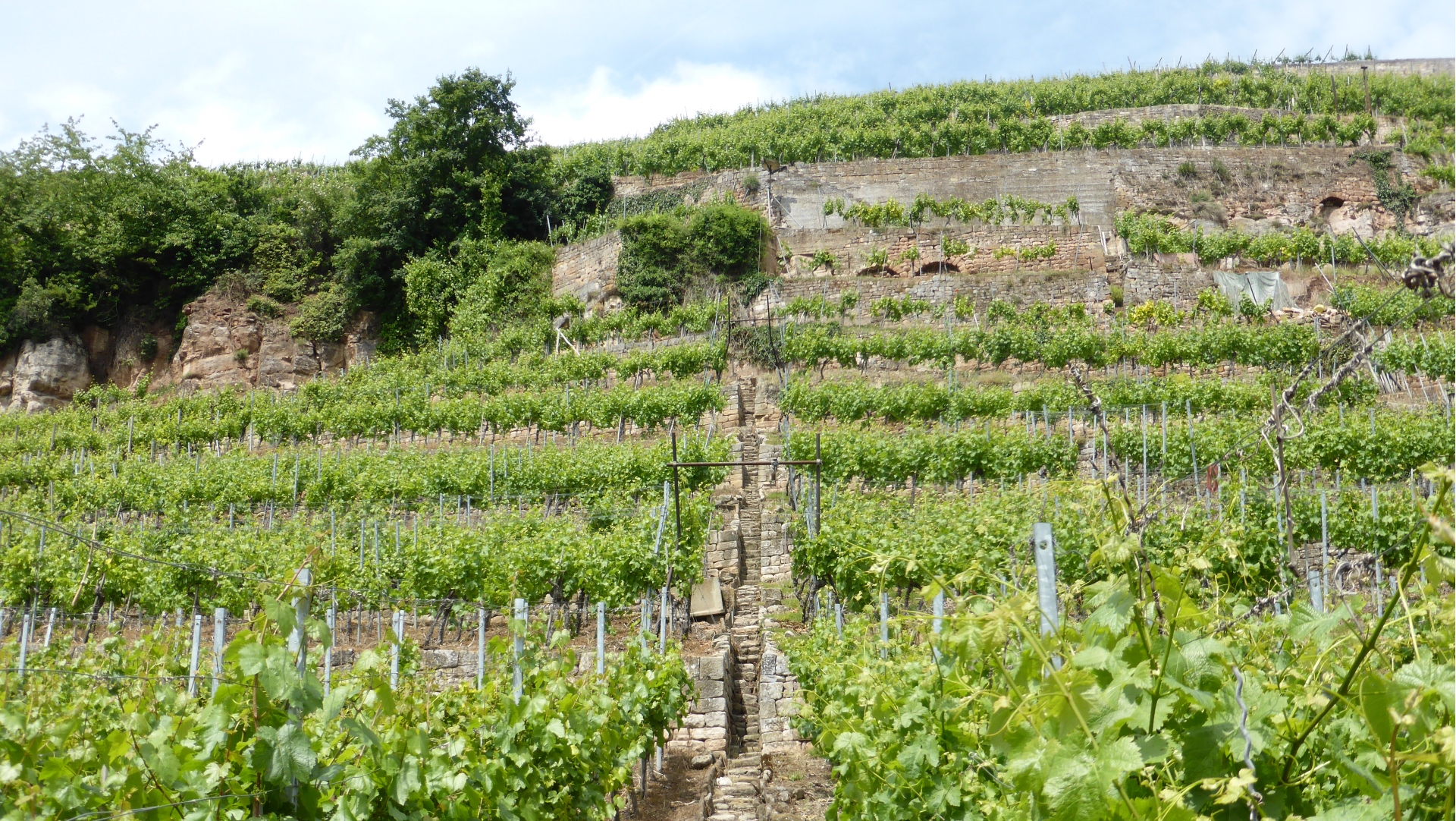Weinerlebnisweg 13b


I will try to hit the stone so that it is suitable for the
wall. I have got a double pointed pick –
Claus Haegle has learned from his father how to build a dry wall
professionally. Listen to him, he will tell you about how a typical wall stone
should look like and how these stones make a solid wall.Such a stone has a
face, that is the beautyful side, like people have it, too. The bottom of the
stone should be smoothed well. There is top side of the stone and the back is
often spiky, so that it can be connected with the small stones to be pressed
between the wall and the soil. Such a wall does not last forever. Due to the
pressure of the hillside it may occur that the walls collapse. The winegrower
is not very happy about this situation, quite the opposite, it is very big
challenge for him to rebuilt the wall and it is a very difficult handicraft to
do. First he has to separate the whole material which has slipped down. The
stones have to be put aside, to store the soil accordingly and to dig out a
base, approx. 80 cm in depth and 1 metre in direction of the hillside. When the
base is ready, the winegrower can start with the first row. He takes the bigger
stones, but the most important thing is the walling behind. When the first row
is ready, he concentrates on the walling behind. Smaller stones without a face
unsuitable for the wall itself will be wedged so that they have an own tension
and take away the pressure from the hill and from the front wall. Only this way
the wall will be of sturdy construction. So one row after the other will be
made using the stones which sometimes have to be reworked. In the past it took
them one or two days until the stone was ready made. If you count the millions
of stones we have here, you can imagine that they were manufactured in many
life times. Today it is a little bit easier, because the stones are already
hit, but they have to be reworked for the actual position in the rebuilt wall.The
stone now should fit well – I will try it now and continue stone by stone. The complex system and the specialties of the
walls Claus Haegele will explain in another story.





